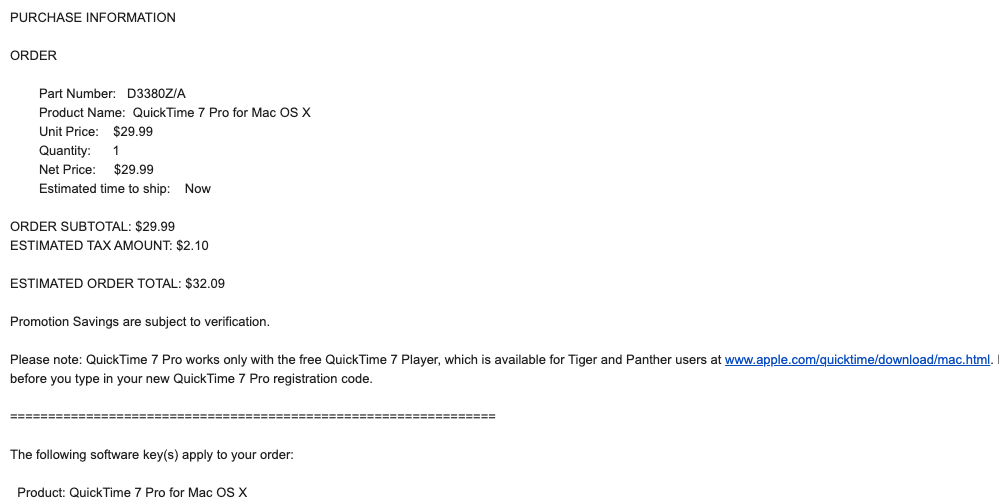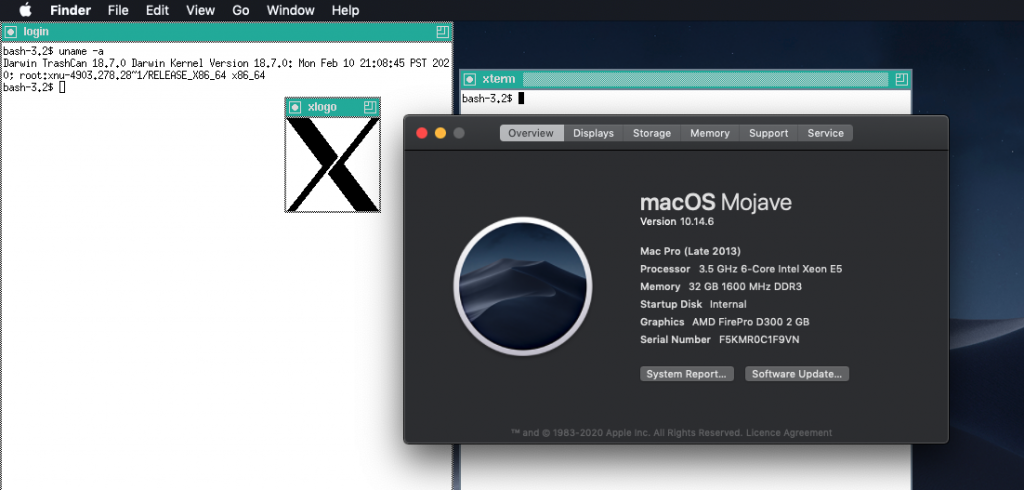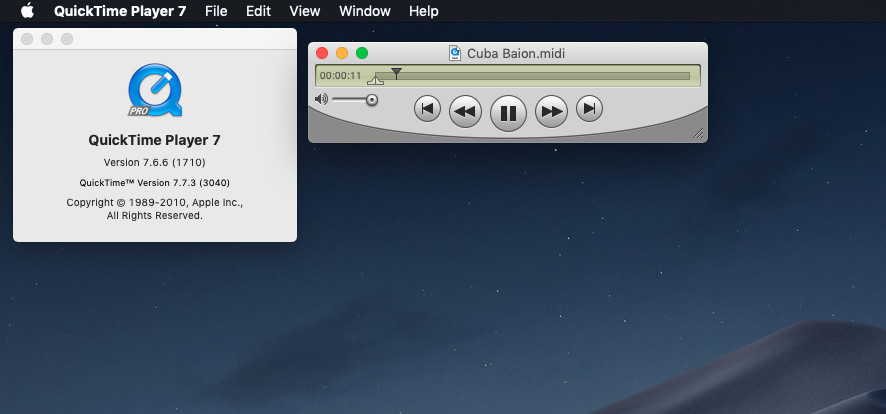I was looking for some generic music and I thought I’d just download some MIDI files, and go with that. I mean come on, it’s 2020, even Windows 10 can play MIDI’s and even Microsoft has finally put in some sampled sound banks back in the what Vista days? Maybe XP??
Anyway, Apple has had sound banked MIDI for ages, going back to MacOS 7.something with a really revamped and great one in MacOS 8. Anyways I download Cuba Baion, and it doesn’t know what to do with it. I drag it to QuickTime 10, and it doesn’t know either.
So I fire up a Snow Leopard VM, and it too has QuickTime 10, and although it cannot play it, it offers to open up QuickTime 7 for me, and it plays. So I do the natrual thing, and zip of QuckTime 7, and copy it to Mojave, and lo it runs!
Back in the day, I bought QuickTime so I search my emails, and yep April of 2006 there is the receipt with the code!


I put in my pro key from back in 2006 and it happily registered.
Awesome!
Now, another thing from Snow Leopard that isn’t around anymore is X11. Can it be that easy?

I copy the app over, along with /usr/X11 and yes, that’s all it takes, and now I have X11 running on Mojave!
Too bad Catalina users, you can’t do any of this.


XQuartz replaced X11.app a long long time ago: https://www.xquartz.org/
MIDI on Macs was kinda weird. There was no lower level system-wide MIDI mapper or playback device system like Windows. It all ran through classic Quicktime. People don’t give it credit, but the Windows Multimedia Extensions were pretty forward thinking with regards to device support. I suppose it also helped that the PC had a history of supporting MIDI thanks to early software and games relying on Roland hardware like the MPU-401 and MT-32.
The midi mapper from 3.0 MME is pretty cool too! It really did help that so many machines had sound cards with basic midi playback, although it was all done with actual hardware.
Now that I think about it, I believe 95 or 98 had some add on to bring soft sampled devices to windows. I recall Final Fantasy VII on the pc including one that “used a lot of CPU” or something system wise as it wasn’t enabled by default, but it sounded amazing. I had an awe64 so it didn’t change so much, but after using OS X for a bit again, Microsoft got it right in Vista to pull all the direct sound card access and do all the controls, mixing, and levels in software so you have far better control over audio. OS X and it’s single point of audio is like going back to XP.
I’m kind of surprised QuickTime 7 runs at all. But obviously it’s 32bit only. It probably made the sin of using Carbon.
Microsoft added the Roland soft synth in Windows 98 and only worked with WDM audio drivers (mainly because “dumb” DAC soundcards without a synth were becoming common). Final Fantasy VII shipped with the superior sounding Yamaha XG softsynth and used the DirectMusic API.
Yeah, QT7 was carbon. OS X does have a similar sound system to Vista+ with CoreAudio. Problem is Apple keeps changing the API around and they had horrible documentation of the whole thing. Their dev docs were always pretty lousy. When working with the rough port of Mac-on-Linux to OS X back in 2004, I had to hunt for basic sound output code. Most everyone was using crude CoreAudio HAL code to do the task that the Omni Group posted in OS X’s early days since Apple provided zero documentation! Even now I’m still kinda confused on how to play waveform audio on OS X. Windows is easy, you open the well documented DirectSound or WinMM API and send it some waveform data. Although nowadays everyone just uses SDL.
That’s right, the Yamaha XG! Wow that thing sounded awesome!
Now that Q2DOS is 64bit, I was looking at how to bring it to OS X, and yeah it seems SDL is really the only way to do it.
Despite all that cash they are sitting on OS X is just as confused and split brained as it was in the Rhapsody days.
At some point I guess we are all waiting for the ARM transition and the removal of the general use userland from OS X so it becomes some iOS+ thing. Yuck. Catalina is hot garbage, I can’t imagine how it will get worse.
NT 3.50 Build 782 (RC2) source code has been leaked. anonfiles.com
Wow very cool. But I’m not going to lie, I had hoped that it was OS/2!
Xm… Roland Sound Canvas general midi bank support for windows added in 1996, with DirectX 6 media or DX 5 (as single update). Yamaha XG exist as Windows XP official addon update (2 versions exist). So, for windows 3.x you can use old good Wingroove 0.96e 🙂 as system driver too.
The simplest way for have the x11: https://www.xquartz.org/
I copy from year ago telnet and ftp too…